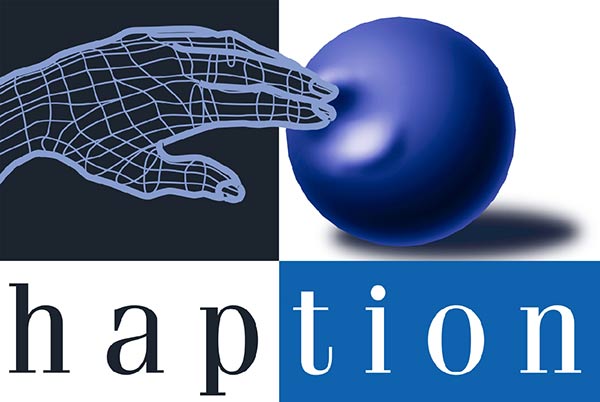Henry Fuchs, Ph.D. VR Keynote Speaker

Telepresence: Soon not just a dream and a promise
Dreams of telepresence are fed by special effects in movies, on stage, and in TV programs. These illusions regularly fool the audiences of these productions, but they do not achieve telepresence for the actual participants in two or more distant locations. Some of the illusions used in these productions have been known and exploited for centuries. Why, then, is telepresence so difficult to achieve? This talk will explore some of the classic illusions, review recent technical advances in the component technologies of 3D acquisition and 3D display, and suggest directions for future development. We will also examine the impact of such recent developments as Microsoft Kinect and Google Glass, and how they may dramatically improve the chances that some forms of telepresence may become commercially viable in the near future.
Bio
Henry Fuchs is the Federico Gil Distinguished Professor of Computer Science and Adjunct Professor of Biomedical Engineering at UNC Chapel Hill. He has been active in computer graphics since the early 1970s, with rendering algorithms (BSP Trees), hardware (Pixel-Planes and PixelFlow), virtual environments, tele-immersion systems and medical applications. He received a Ph.D. in 1975 from the University of Utah.
From 1975 to 1978 he was an assistant professor at the University of Texas at Dallas. Since 1978, he’s been on the faculty at UNC Chapel Hill. He is a member of the National Academy of Engineering, a fellow of the American Academy of Arts and Sciences, the recipient of the 1992 ACM-SIGGRAPH Achievement Award, the 1992 Academic Award of the National Computer Graphics Association, the 1997 Satava Award of the Medicine Meets Virtual Reality Conference, and the 2013 IEEE-VGTC Virtual Reality Career Award.Hunter Hoffman, Ph.D. VR Capstone Speaker

Digital Fear and Pain Control and the Oculus Rift: SnowWorld, SpiderWorld, and World Trade Center World
Chilldren/adults with severe burn wounds often endure uncontrolled pain during wound care. Bandages are changed, and wounds cleaned frequently to prevent infection. Physical therapy skin stretching exercises can also be painful. Immersive virtual reality is proving valuable as an adjunctive non-pharmacologic analgesic. Patients "go into" the computer generated world to escape their pain. Results of controlled studies consistently show large reductions in how much pain patients experience during wound care and physical therapy, and fMRI brain scans show large reductions in pain-related brain activity during VR, comparable to the amount of pain reduction from a moderate dose of hydromorphone. Clinical studies in burn patients with combat-related burn injuries from roadside bombs suggest that VR distraction is most effective in patients who need it the most, those with worst pain intensity of 7 or higher on a zero to ten scale. Wide field of view VR goggles, and interacting with the virtual world enhance analgesic effectiveness Immersive VR goggles with wide field of view are on the verge of dropping to 1/1000ths the current price. What are the implications of the Oculus Rift? I will also briefly discuss some of my other research using SpiderWorld with tactile augmentation to treat spider phobics, and new research mixing meds and digits, exploring the use of virtual reality exposure therapy for civilian PostTraumatic Stress Disorder, in combination with drugs that accelerate fear extinction learning.
Bio
As an undergraduate, Hunter studied magical thinking. He conducted pre-graduate research at Princeton on "reality monitoring", and on "illusory conjunctions". In grad school at the UW, he specializing in human learning/memory and attention (e.g., the reliability of eyewitness memory). Hoffman began studying virtual reality 1993, shortly after his first VR experience/demo fascinated him. Hoffman joined the Human Interface Technology Lab or HITLab (founded by Tom Furness). An interdisciplinary researcher, Hoffman is now Director of the Virtual Reality Analgesia Research Center at the HITLab, a research scientist in mechanical engineering in Eric Seibel's Human Photonics Lab, and affiliate faculty in Radiology and Psychology, and works half time at Shriners Children's Burn Center in Galveston Texas. Initially interested in "virtual reality monitoring" how people distinguish the real vs. virtual origins of memories, Hoffman began exploring techniques that blur the distinction between fact (reality) and fantasy (virtual reality), and that maximize presence in VR. Hoffman quickly became one of the early pioneers of applying virtual reality technology and theories of VR, attention and memory to difficult medical and psychological problems.
Hoffman, Dave Patterson (and later Sam Sharar) co-originated the technique of using VR for pain distraction. Hoffman has led the design of several virtual worlds, including SnowWorld pain distraction,the first virtual world designed for pain distraction, which also became an immersive VR exhibit curated by the Smithsonian museum). Hoffman's SpiderWorld with tactile augmentation was used to conduct the second case study ever published on using VR for treating phobias. And Difede and Hoffman 2003 published the first study to use VR exposure therapy to treat civilian Post-traumatic Stress Disorder (World Trade Center World, co-designed with clinical psychologist JoAnn Difede. who more recently combined VR WTC world with d-cycloserine, a fear extinction accelerating drug). Hoffman, UW instrument maker Jeff Magula and others designed and developed custom original hardware technologies, such as wide field of view fiberoptic magnet-friendly VR goggles that can be used during fMRI brain scans, and water friendly VR goggles that can be used by burn patients in the scrub tank. In addition, Hoffman helped Eric Seibel and his team design a pair of wide field of view scanning fiber VR goggles. Eric's single "wiggling" glass fiber, controlled by piezoelectric crystals, sprays photons onto a rear projection screen near the user's eyes. Hunter Hoffman was named one of the top “fast 50” innovators of the next 10 years.





















